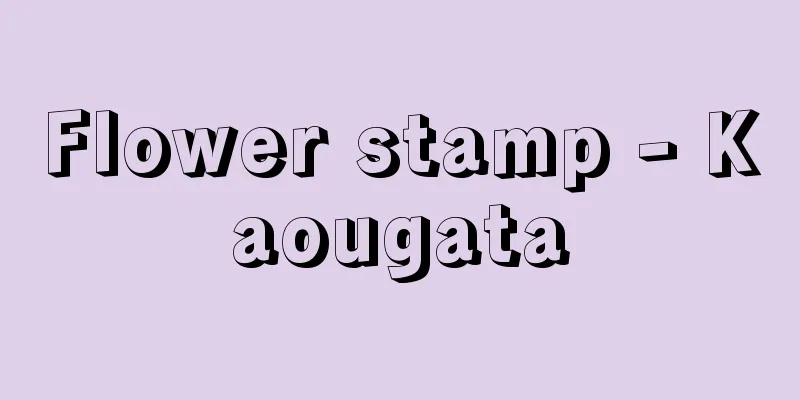Flower stamp - Kaougata

|
...In the 14th century, the custom of stamping instead of kao became more prevalent among Zen Buddhist monks, and the samurai society, who were followers of Zen Buddhism, accepted this influence, which led to the emergence and development of stamps for samurai documents during the Sengoku period. Also, during the Sengoku period, the stamps were engraved with handwritten kao, which came to be called "kao-gata" and were used instead of kao on documents. The style of signature and seal gradually became standardized from the late Middle Ages to the early modern period, becoming the basis for the current style of signature and seal. ... From 【Kao】 … *Some of the terminology that refers to "Kao-gata" is listed below. Source | Heibonsha World Encyclopedia 2nd Edition | Information |
|
… 14世紀には禅僧社会では花押に代えて押印の風習が多くなり,また禅宗信者である武家社会がその影響を受容してここに戦国時代の武家文書の印判状の発生と発展を促した。また版刻花押は戦国時代になると〈花押型〉と称して筆書きの花押をそのまま木印に刻して文書の花押代りに使うようになった。署名押印の様式は中世後期より近世へとしだいに定型化し,現行の署名押印様式の母型となった。… 【花押】より… ※「花押型」について言及している用語解説の一部を掲載しています。 出典|株式会社平凡社世界大百科事典 第2版について | 情報 |
Recommend
Calendar time - Rekihyoji
A time system measured based on the revolution of...
Fennec fox
An animal of the order Carnivora and family Canid...
Petzval, JM
...However, the lens he used was slow, at F15-17,...
Kami-san-to
...The Tokara Islands, located between Kyushu and...
Magnolia soulangiana (English spelling)
…[Kunihiko Ueda]. … *Some of the terminology that...
Payment Order - Kyufu Kamei
...Orders in the narrow sense of the term as a co...
Tsuna Hills
Awaji Island, Hyogo Prefecture, is a landform-typ...
Naval Academy - Kaigunheigakko
An officer training institution in the former Imp...
Choral polyphony
...Polyphony, which had previously been used main...
Eruption - eruption
A phenomenon in which liquid and solid materials ...
Bregendal, M.
… In the 20th century, people of common origins f...
Kitao School - Kitaoha
A school of ukiyo-e artists founded by Kitao Shige...
The vassal system
A system of lord-vassal relationships with a stron...
Ippongata Nadohyoiri - One-sword entry into the ring
A play by Hasegawa Shin. Two acts. Published in t...
Macroglossum
...This group of moths is relatively small and ma...





![Yotsukaido [city] - Yotsukaido](/upload/images/67cd1aaf7e384.webp)



